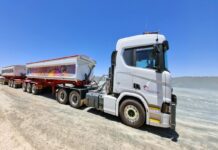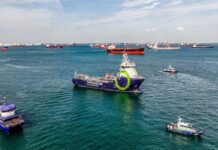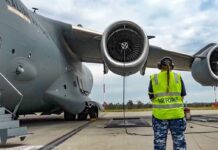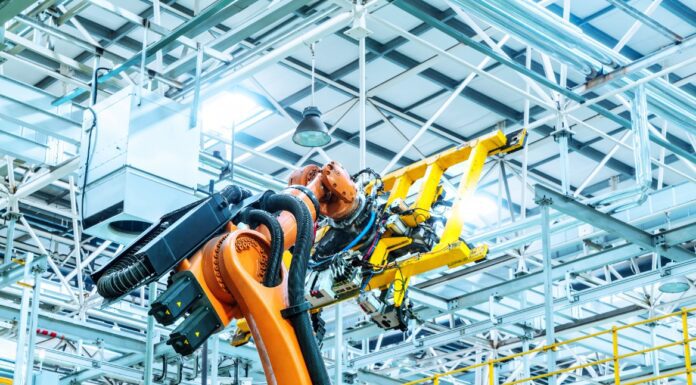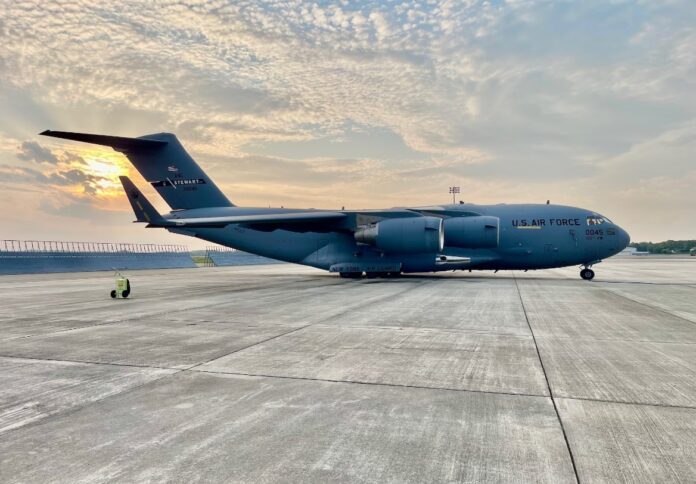
The US Air Force is nearing the final phase of evaluating Microvane drag reduction technology for the C-17 Globemaster III, a move expected to enhance fuel efficiency and operational capability.
Developed in collaboration with the Air Force Research Laboratory, private industry, and the Air Force Lifecycle Management Center, the technology aims to reduce aerodynamic drag and extend mission range.
Microvanes are small, 3D-printed devices measuring approximately 4 x 16 inches, which are attached to the rear fuselage of the aircraft.
By modifying airflow around the cargo door section, the devices reduce drag by about one per cent, leading to fuel savings and increased range.
When fully implemented across the US Air Force’s C-17 fleet, including Air National Guard and Air Force Reserve aircraft, the technology is projected to save over $14 million annually in fuel costs while improving mobility support.
Interest in the modification has also been expressed by partner nations such as Canada and the United Kingdom.
Deputy Assistant Secretary of the Air Force for Operational Energy, Safety, and Occupational Health Roberto Guerrero emphasised the strategic benefits of the initiative.
“Every gallon of fuel saved strengthens our readiness and operational effectiveness,” Guerrero said. “By adding modern technology like microvanes to our legacy aircraft, we’re saving millions in fuel costs and building capability critical for maintaining our competitive edge in the era of Great Power Competition.”
The technology has undergone extensive research and evaluation, including testing for paratrooper airdrop applications.
In October 2023, the Department of the Air Force launched the final phase of flight testing, which included air refuelling and assault strip operations.
The first permanent microvane installation was completed on a C-17 assigned to Stewart Air National Guard Base, with the aircraft continuing to operate without issues for over a year, including during a deployment to an area of responsibility.
Lt Col Eric Durkins, Commander of the 105th Aircraft Maintenance Squadron at Stewart Air National Guard Base, highlighted the collaboration between Air Force units in refining the modification process.
“We paired up with Memphis ANGB, which increased process knowledge across both wings,” Durkins said. “Our maintainers, working side by side with the engineering team from the start of this project, helped develop the installation procedures for the C-17 enterprise.”
Currently, six aircraft have been modified for the Logistics Service Assessment (LSA), the final step before fleetwide implementation.
The six-month LSA is set to begin once the final two aircraft are modified at Charleston Air Force Base this month.
Guerrero underscored the broader impact of the initiative, stating, “This collaboration highlights how partnerships drive forward our mission objectives. It’s about ensuring that we remain agile and capable in a rapidly evolving global environment.”
He also noted that recent legislation allows cost savings from the technology to be reinvested in other initiatives to enhance combat capability.


